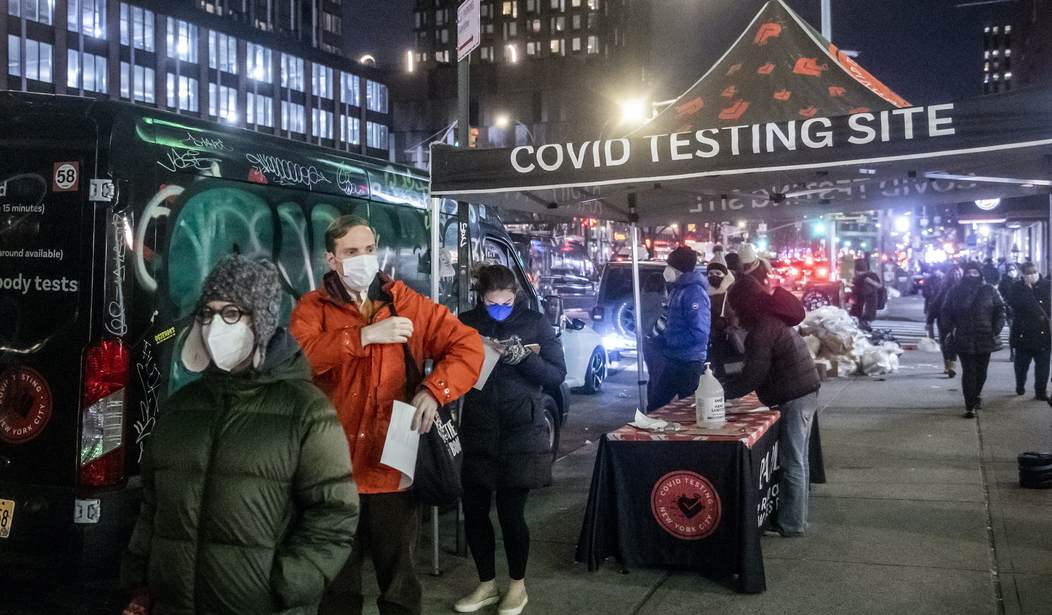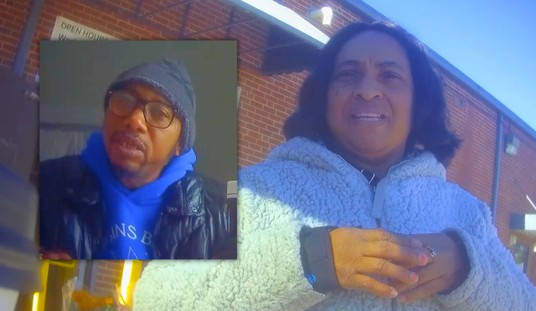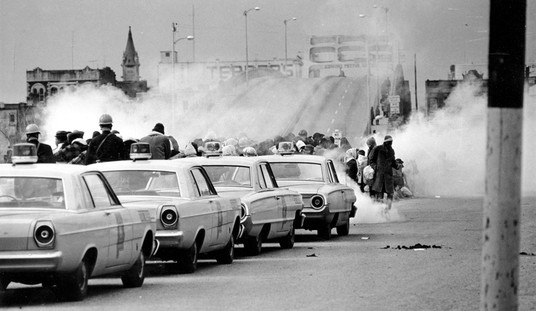Might be time to move on from blogging about Omicron and focus on predicting when the next irrepressible immune-shattering variant will arrive.
I’ll take May 1 in the pool since that timing would be optimally soul-crushing. That’ll be right around when everyone’s starting to believe we might have finally, finally turned the corner and can have our first worry-free summer in three years.
For now, though, the data on Omicron is brightening. The UK is always a few weeks ahead of us and their wave has already begun to subside:

How about in the northeastern U.S., the hardest hit region of the country? New York City appears to be peaking now:

Washington D.C.? Already past the peak and dropping:

What about Boston? Well, if you look at the case curve, it’s still on the way up…

…but case curves can be misleading. They depend on people being willing and able to get tested, after all. The most accurate measure we have of how a community is faring with COVID is, well, poop. When in doubt, look at the poop.
Testing can be spotty but the poop will never steer you wrong.
Boston’s poop tells an optimistic story:
Boston wastewater thru 1/10 (🧵)
-that peak and steep drop I wrote about 3 days ago? it’s happening as expected, and right on schedule
-great news; hopeful this brings relief to Boston area healthcare system and healthcare workers
-now a familiar pattern w/ Omicron pic.twitter.com/Qrkxbd4Bf7— Joseph Allen (@j_g_allen) January 11, 2022
And what of the rest of the country? When can we expect America as a whole to peak?
We may have already done it, according to one model:
“It’s going to come down as fast as it went up,” said Ali Mokdad, a professor of health metrics sciences at the University of Washington in Seattle…
The University of Washington’s own highly influential model projects that the number of daily reported cases in the U.S. will crest at 1.2 million by Jan. 19 and will then fall sharply “simply because everybody who could be infected will be infected,” according to Mokdad.
In fact, he said, by the university’s complex calculations, the true number of new daily infections in the U.S. — an estimate that includes people who were never tested — has already peaked, hitting 6 million on Jan. 6.
Great news, but cases are less important than severe illness. How are we doing with hospitalizations?
That picture is more complicated. On the one hand, new data from California confirms what we’ve all suspected since Thanksgiving, that Omicron really is meaningfully milder than Delta. If there was any doubt left about that, this should remove it:
NEW: Study on severity of those infected with the #OmicronVariant compared to the #DeltaVariant:
⬇️53% less risk of symptomatic hospitalization
⬇️74% less risk of ICU admission
⬇️91% less risk of death
0⃣Omicron patients required mechanical ventilation
https://t.co/to2swFYF5Q pic.twitter.com/LZYf0t3CGY— Rochelle Walensky, MD, MPH (@CDCDirector) January 12, 2022
When hospitalized patients have their virus sequenced:
In France, Blue = Delta, Red = Omicron, Green=Uncertain
Omicron associated with reduced hospital length of stay (43% vs Delta 19% less than 1 day) and substantially less ICU requirement https://t.co/z11NmhLUyH— Eric Topol (@EricTopol) January 11, 2022
California’s data also confirmed the French findings that hospitalizations are milder during Omicron. The average stay was more than three days shorter than the the typical Delta hospitalization. But while the new variant is milder even for the unvaccinated, there continues to be a gap between those who’ve had their shots and those who haven’t: “Californians who were vaccinated were 64 to 73 percent less likely to be hospitalized than unvaccinated people.”
That’s the good news. Here’s the less than good news:

COVID hospitalizations yesterday in the U.S. were the highest of the entire pandemic, both in terms of the single-day total and the average. “But a huge chunk of those hospitalizations are incidental, right?” Well, yeah, but much depends on how we define “incidental.” It’s true that some people are being admitted for reasons wholly unrelated to COVID, with no symptoms, and then testing positive when they get to the ER. But that’s a small group, according to doctors who spoke to Ed Yong: “It happens, but it’s not a big proportion.” The larger group of “incidentals” are people with some serious underlying health problem that’s been exacerbated by their COVID infection. They’re not hospitalized primarily for COVID symptoms but the disease is making their other illness worse. Those people are putting a huge strain on hospitals since you can’t patch them up and send them on their way in a matter of an hour or two. They need meaningful care:
The problem with splitting people into these two rough categories is that a lot of patients, including those with chronic illnesses, don’t fit neatly into either. COVID isn’t just a respiratory disease; it also affects other organ systems. It can make a weak heart beat erratically, turn a manageable case of diabetes into a severe one, or weaken a frail person to the point where they fall and break something. “If you’re on the margin of coming into the hospital, COVID tips you over,” Vineet Arora, a hospitalist at the University of Chicago Medicine, told me. In such cases, COVID might not be listed as a reason for admission, but the patient wouldn’t have been admitted were it not for COVID…
Even the truly incidental cases increase the strain. COVID-positive people must be kept apart from other patients, which complicates hospitals’ ability to use the beds they have. These patients need to be monitored in case their infection progresses into something more severe. If they start dying for unrelated reasons, their family won’t be allowed into their room. The health-care workers who treat them need to wear full personal protective equipment. If they need follow-up care, they can’t be discharged to a nursing home or similar facility. They’re taking up space and attention when hospitals are short on both. “If you’re 90 percent full and you suddenly have 10 percent more patients, I don’t care if it’s half COVID, all COVID, incidental COVID—it just matters that you’re full,” Faust said.
It’s comforting to believe that half the people hospitalized with COVID right now might be totally asymptomatic, with nothing worse than sprained ankles or whatever, but it ain’t true. Many are in the gray zone between being hospitalized “with COVID” and “for COVID.” And at the moment, thanks to Omicron, there aren’t enough doctors and nurses in some hot spots to give each the care they’d normally get.
I’ll leave you with this mood check as the clock ticks towards year three of the pandemic: “A combined 52% of all respondents now say they believe it will be more than a year — or never — before they can return to their normal, pre-COVID lives. That’s the highest since we began asking this question nearly a year ago.”








Join the conversation as a VIP Member